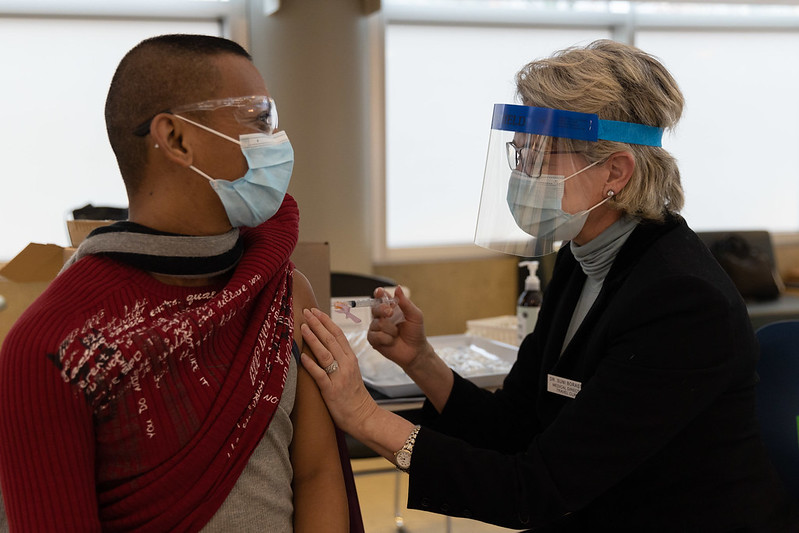My life has meaning, you say? Prove it: Vaccinate all high-risk people with disabilities. Now.

I am an immunocompromised person with disabilities. I take three potent immunosuppressants to control my rheumatoid arthritis (RA), an autoimmune disease I was diagnosed with as an infant. I should have gotten the COVID vaccine long ago. But because I’m under 65, I’m still waiting.
Every state should immediately prioritize high-risk people with disabilities for the COVID-19 vaccine. As disability rights activists like Alice Wong have highlighted, prioritizing people over 65, but not high-risk people with disabilities, could be deadly.
This is not the first time that people with disabilities have been treated as dispensable during the pandemic. Before the U.S Department of Health and Human Service’s Office for Civil Rights intervened, states like Tennessee planned to exclude certain people with disabilities from access to life-saving ventilators—based on assessments that disabled lives were not as worthy of saving. In Oregon, people with disabilities were pressured to sign DNR orders.
As the National Disability Institute has explained, the pandemic has created situations that are particularly dire for disabled people of color as a result of the intersection of disability and racial inequality. In the United States, people of color have contracted and died from COVID-19 at higher rates than white people and are now getting vaccinated at lower rates.
There is a mistaken belief that all high-risk people can isolate at home. This assumption ignores the complexity of disabled life. Some high-risk people with disabilities must shop for food and pick up prescriptions in person because they cannot afford delivery. Others live with family members who are essential workers. Many have jobs that cannot be converted into a work-from-home arrangement. Or they receive in-home care that renders social distancing impossible.
As for me, I go to in-person medical appointments I cannot avoid, and nowhere else.
I dread these appointments—because I dread other people. I sit anxiously in crowded waiting rooms next to people sniffling and coughing behind their masks. At my physical therapist’s office, I yell at other patients who pull their masks down to drink from water bottles. I am the only one who polices the unsafe behavior. Medical staff and doctors see it, and let it slide. They, of course, have been vaccinated.
My chronic health issues are high-maintenance. In the last month alone, I visited my rheumatologist, my physical therapist, my retina specialist and my orthopedic surgeon, who performed my much-delayed knee replacement surgery last December. I made repeated visits to my glaucoma doctor, who monitors my volatile intraocular pressure. Every time I leave my home, I fear that I will contract COVID-19, and that it will kill me.
There are heroes working in health care. There are also COVID-19 deniers. My glaucoma doctor is somewhere in between. When he leans in to examine my eyes, when we are so close that our knees touch, he pulls his mask down to his neck. I tell him not to, but he does it again anyway. He contracted COVID-19 last year.
“It just wasn’t that bad,” he said.
The state I live in prioritized teachers in its vaccine rollout. But unlike other states, here, that category does not include professors. I’m a professor.
The CDC’s Advisory Committee on Immunization Practices recommends that people with high-risk medical conditions who are 16 to 64 years old, people like me, should be part of Phase 1C vaccinations, along with people who are 65 to 74 years old. In my state, I’ve been pushed into the penultimate vaccination phase—but people 65 or older are currently eligible.
My circumstances have tested my resolve. I could use help with my laundry, with cooking, with changing my sheets, with rearranging the two large monitors I use to teach my classes online. I could use a hug. But the people I love live out of state and travel is unsafe.
Still, unlike many high-risk people with disabilities, I can work from home. For now, I can afford to have everything I need delivered to my doorstep. It is difficult to do everything on my own, but I do it anyway. Maybe the greatest risk is to my self-esteem. Throughout the pandemic, the message has been clear: My death would only register as a pre-existing conditions footnote.
My life has meaning, you say? Prove it: Vaccinate all high-risk people with disabilities. Now.
You may also like:





